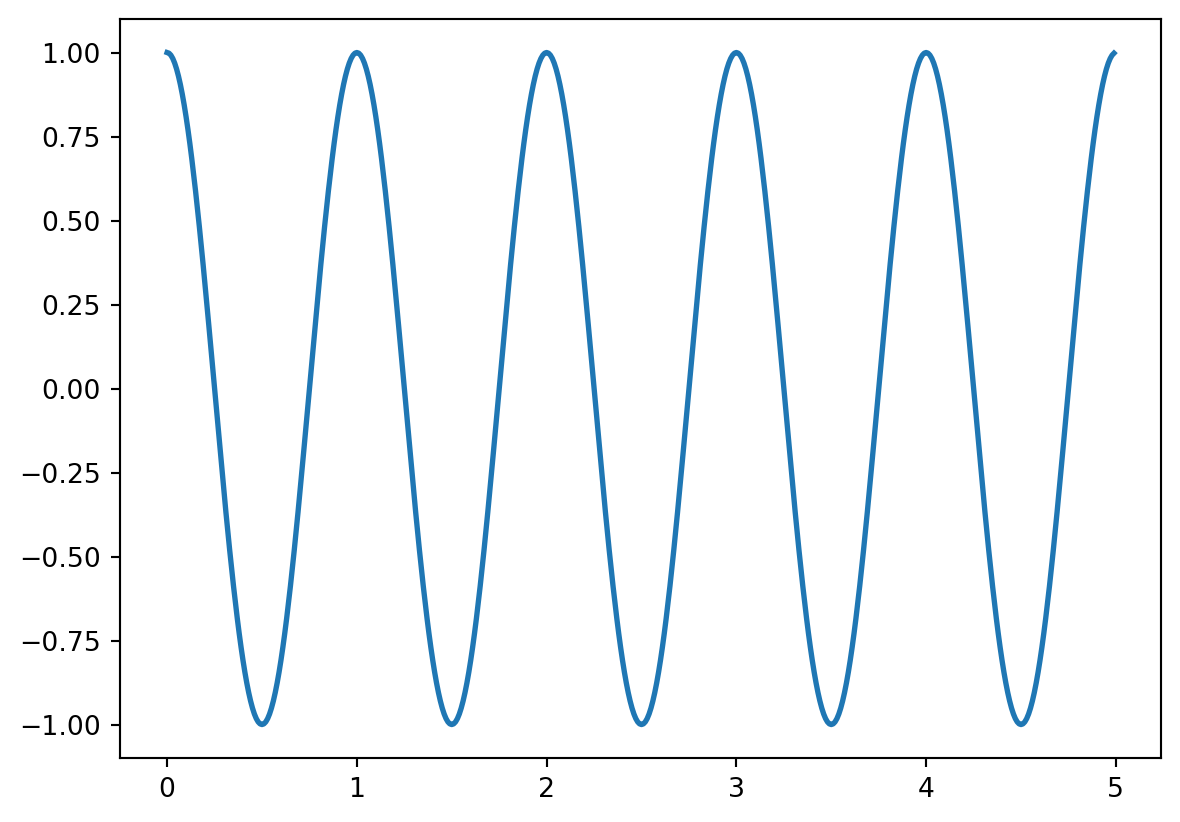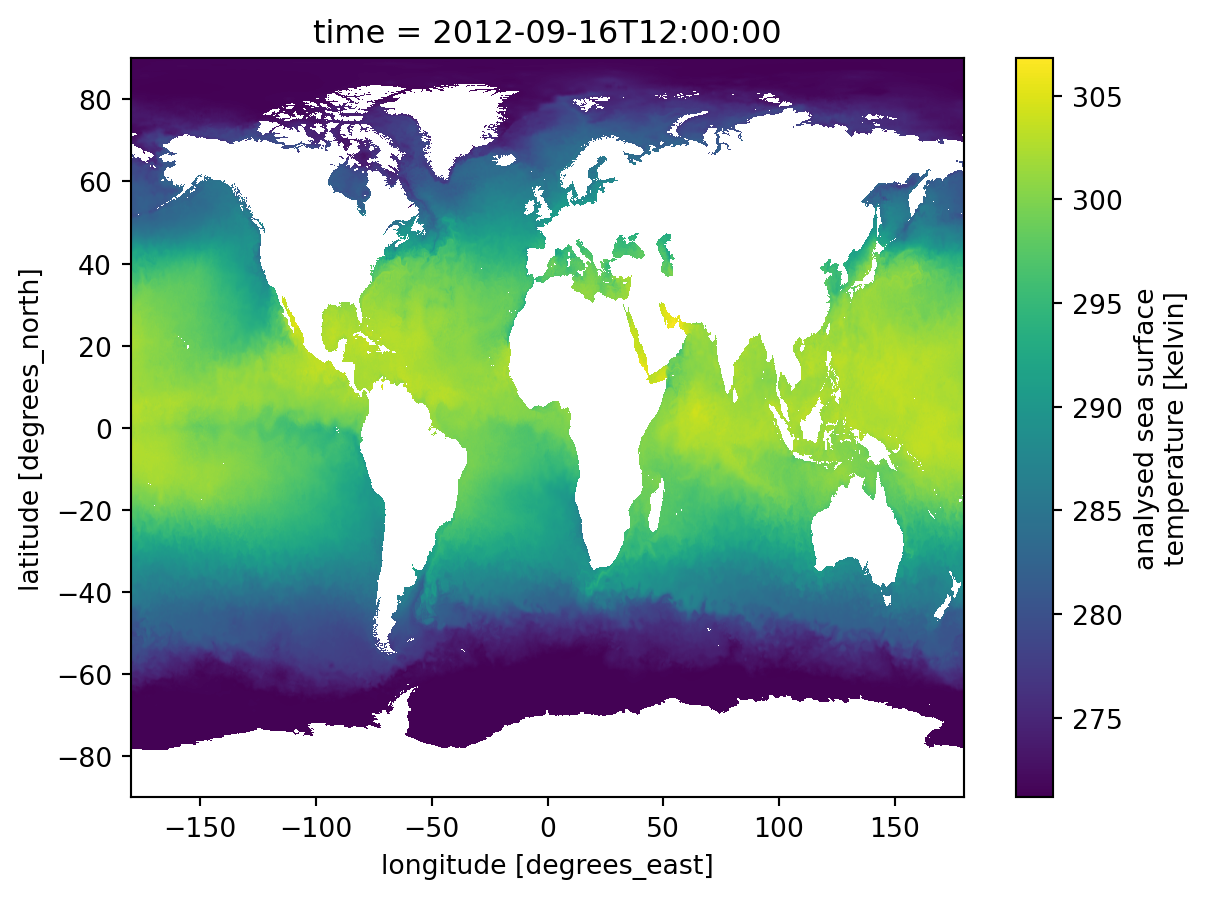import matplotlib.pyplot as plt
import numpy as np
t = np.arange(0.0, 5.0, 0.01)
s = np.cos(2 * np.pi * t)
line = plt.plot(t, s, lw=2)
plt.show()
Matt Fisher, Trey Stafford
Lorem ipsum
Pangeo Forge provides efficient, cloud-optimized access to large datasets.
Lets use xarray to access Pangeo Forge’s NOAA Coastwatch Geo-Polar SST dataset. This dataset was added to Pangeo Forge via a recipe maintained in a pangeo-forge feedstock repository from data hosted at NOAA (Coastwatch 2023).
Lets select a slice (2012-09-16, the date of the record sea ice minimum per the Sea Ice index) out of the sea surface temperature (sst) variable.
Now lets take a look at the data!

Remember how we already plotted some data with matplotlib earlier? See Figure 1!